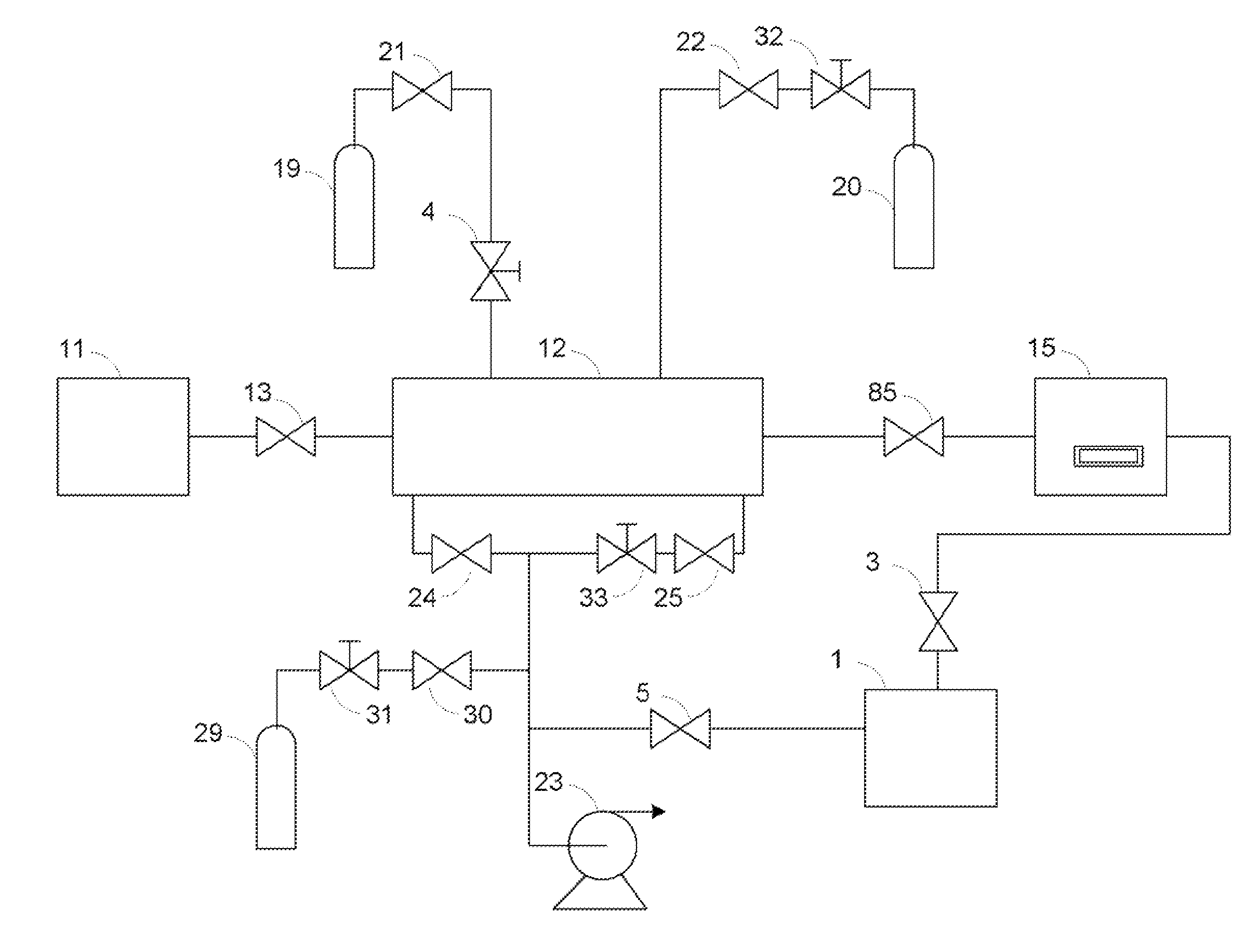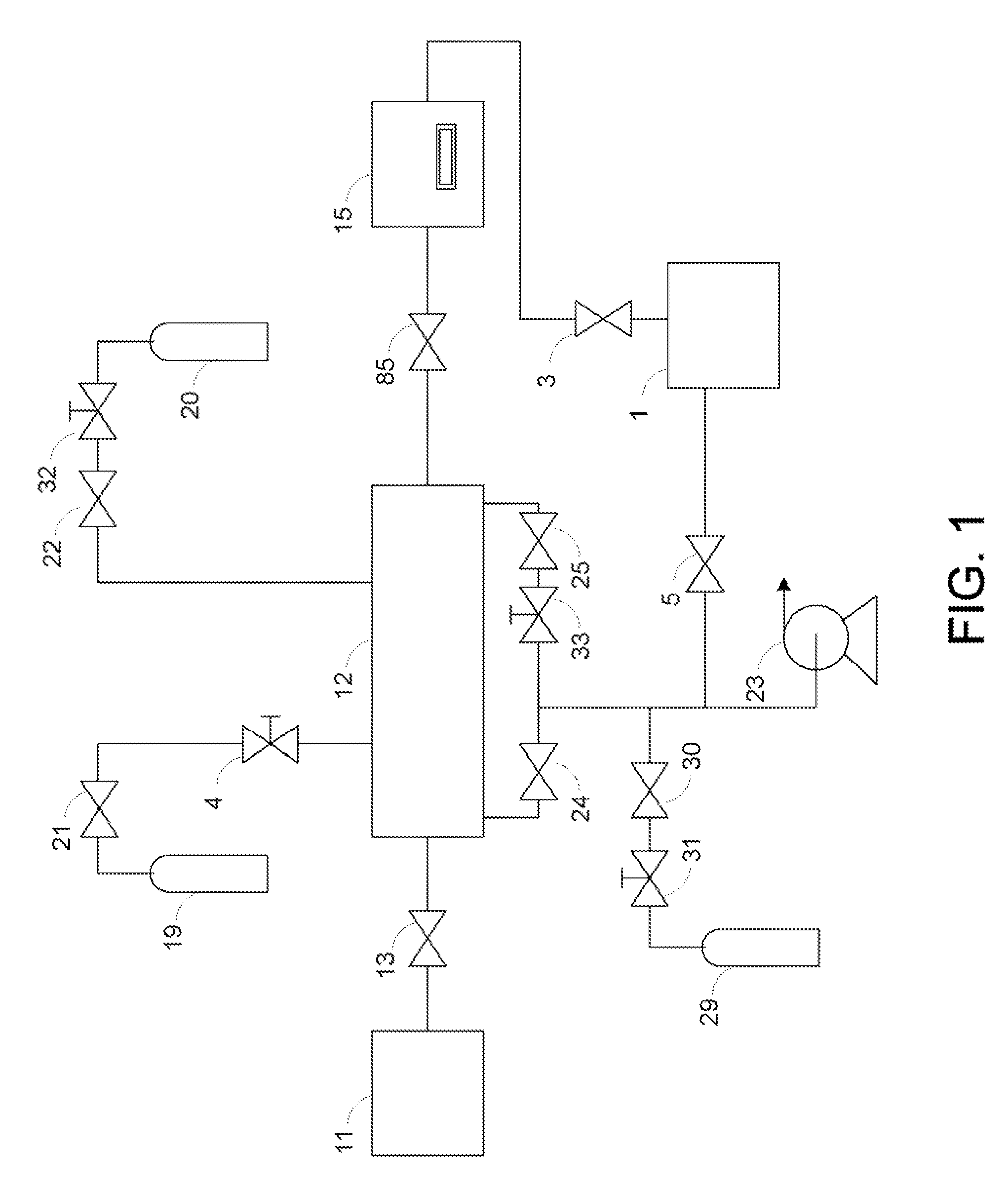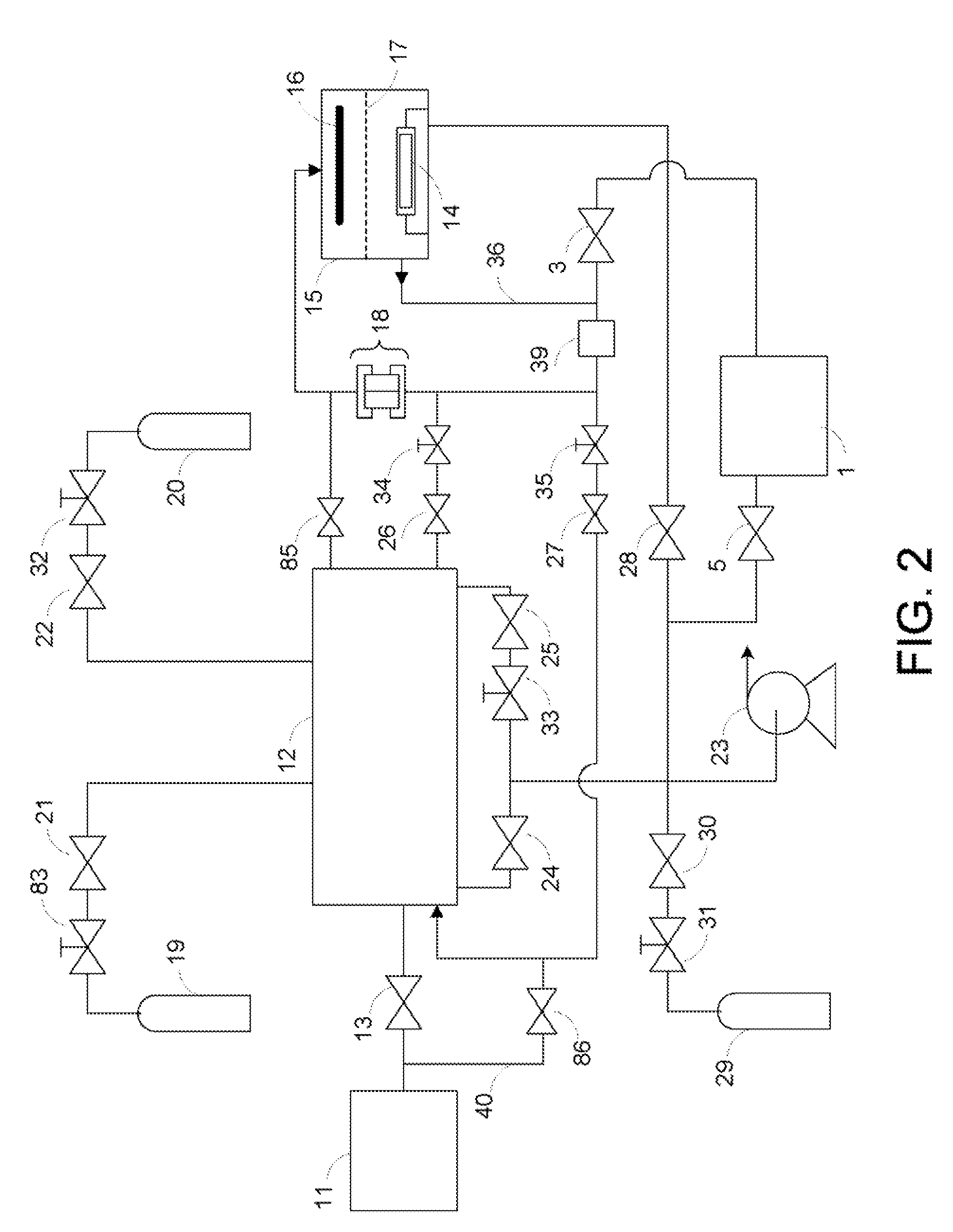Apparatus and method for detecting an endpoint in a vapor phase etch
a technology of vapor phase and apparatus, which is applied in the direction of fluid pressure measurement, instruments, vacuum gauges, etc., can solve the problems of inability to detect endpoints by monitoring gases with gas analyzers in non-plasma systems, methods are difficult to set up, and inaccurate results
- Summary
- Abstract
- Description
- Claims
- Application Information
AI Technical Summary
Benefits of technology
Problems solved by technology
Method used
Image
Examples
example
[0074] For etching a 6″ glass substrate with MEMS devices, typical apparatus and process parameters include: double source chamber design with 11a at 28 C, 11b at 31 C and intermediate connector piece at 35 C. Expansion chamber 12 and etch chamber 15 at 23 C. In step 6 above, both chambers 12 and 15 are filled with a mixture of 45 T Nitrogen (N2) and 450 T Helium (He); total gas pressure is 495 T. In step 8, the chamber 12 is filled with XeF2 gas above 4.2 T. In step 9, the XeF2 gas in chamber 12 is reduced to 4 T for use in the process. In step 10, chamber 12 receives 47 T of Nitrogen (N2) and 470 T of Helium (He); total gas pressure in chamber 12 at the end of step 10 is 521 T.
Endpoint Detection:
[0075] As can be seen in Toda R., Minami K., and Esashi M., “Thin Beam Bulk Micromachining Based on RIE and Xenon Difluoride Silicon Etching”, Transducers '97, IEEE, pp. 671-3, Fourier Transform spectroscopy is used to monitor the etching of silicon by xenon difluoride. The process is r...
PUM
| Property | Measurement | Unit |
|---|---|---|
| size | aaaaa | aaaaa |
| size | aaaaa | aaaaa |
| sublimation pressure | aaaaa | aaaaa |
Abstract
Description
Claims
Application Information
 Login to View More
Login to View More - R&D
- Intellectual Property
- Life Sciences
- Materials
- Tech Scout
- Unparalleled Data Quality
- Higher Quality Content
- 60% Fewer Hallucinations
Browse by: Latest US Patents, China's latest patents, Technical Efficacy Thesaurus, Application Domain, Technology Topic, Popular Technical Reports.
© 2025 PatSnap. All rights reserved.Legal|Privacy policy|Modern Slavery Act Transparency Statement|Sitemap|About US| Contact US: help@patsnap.com



